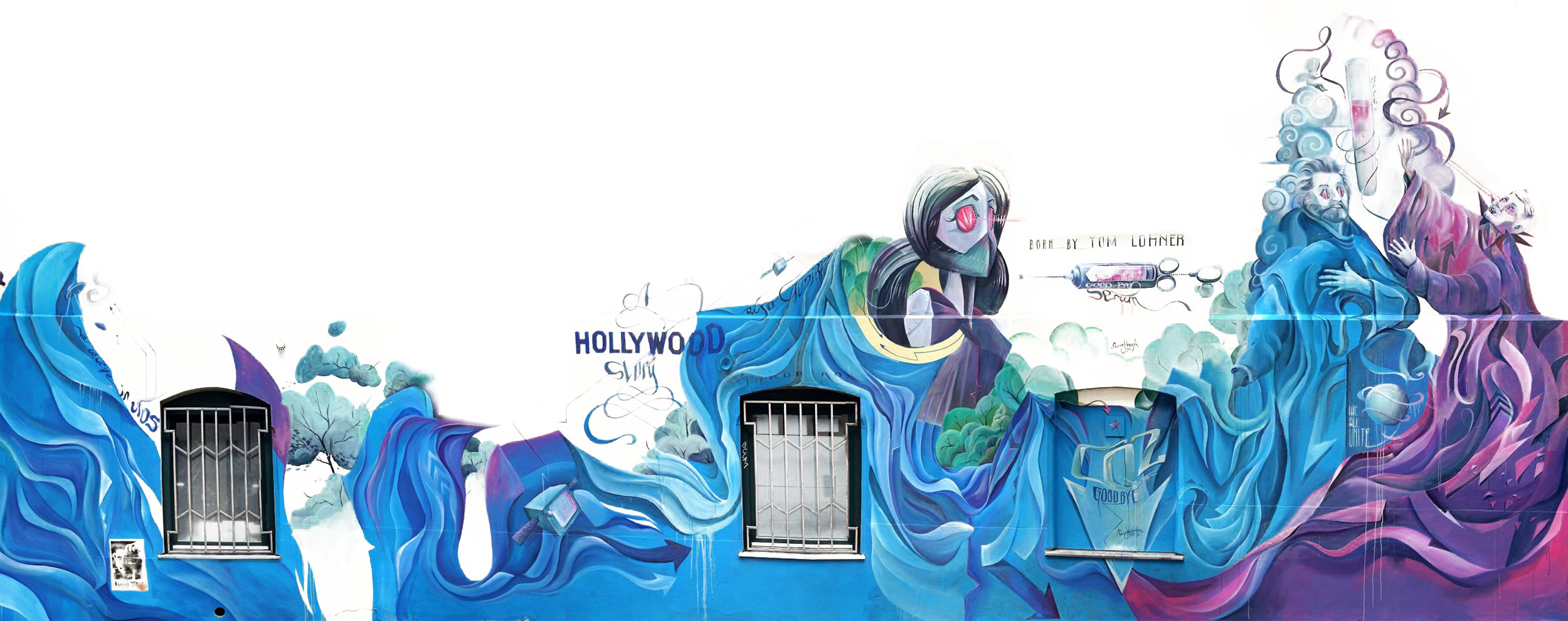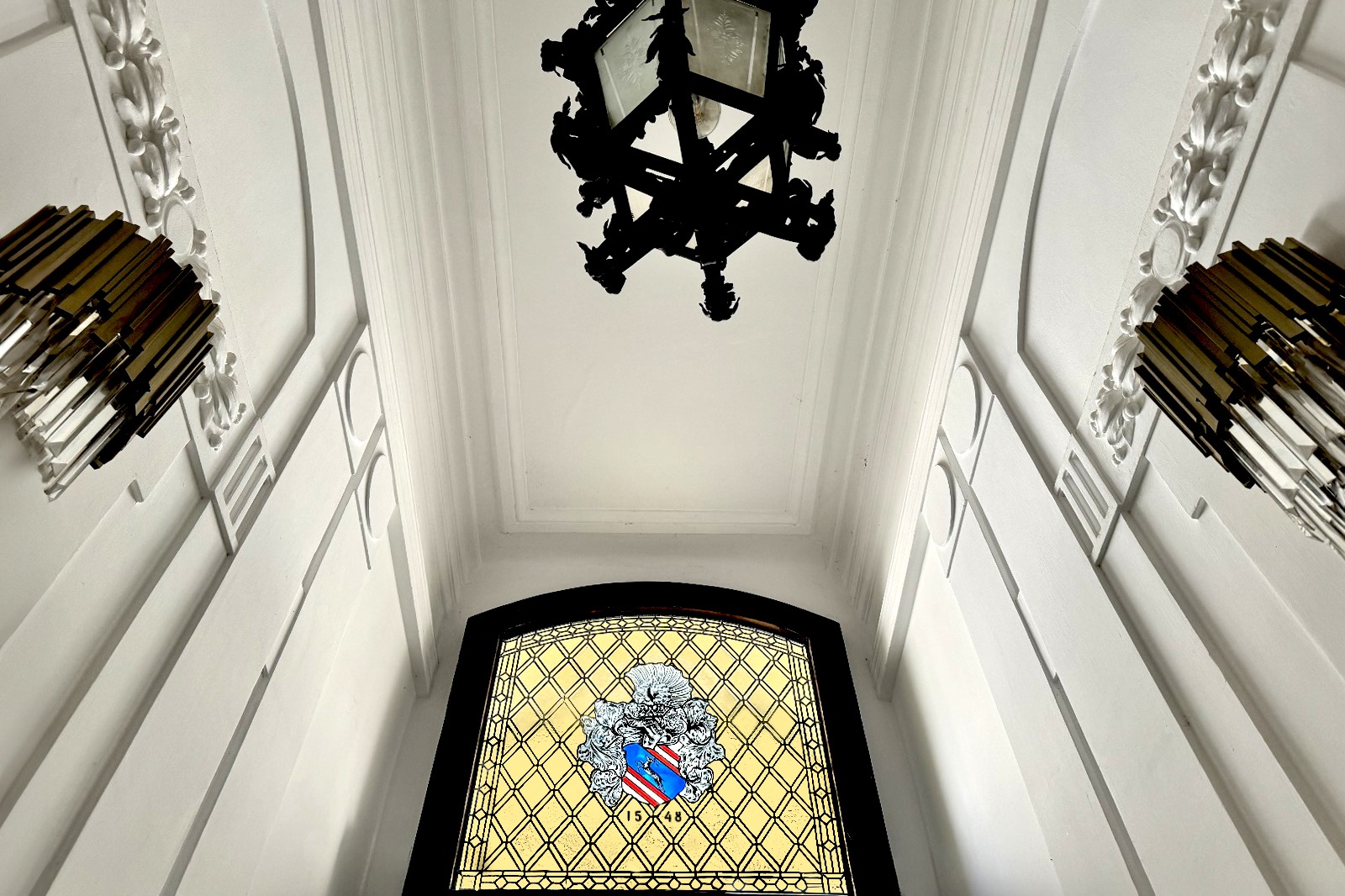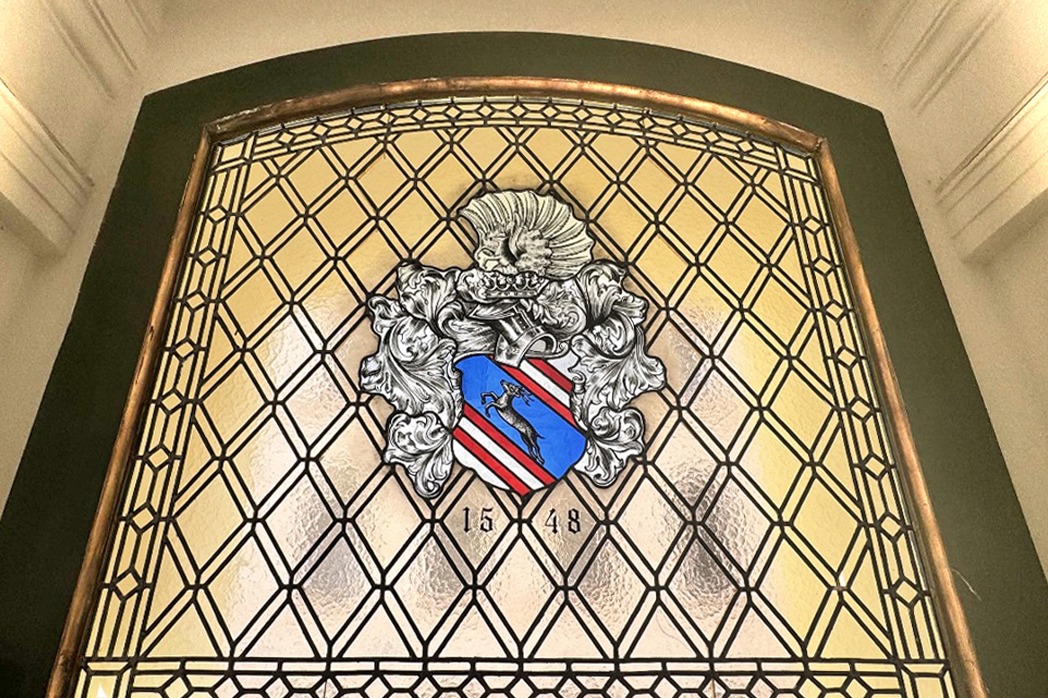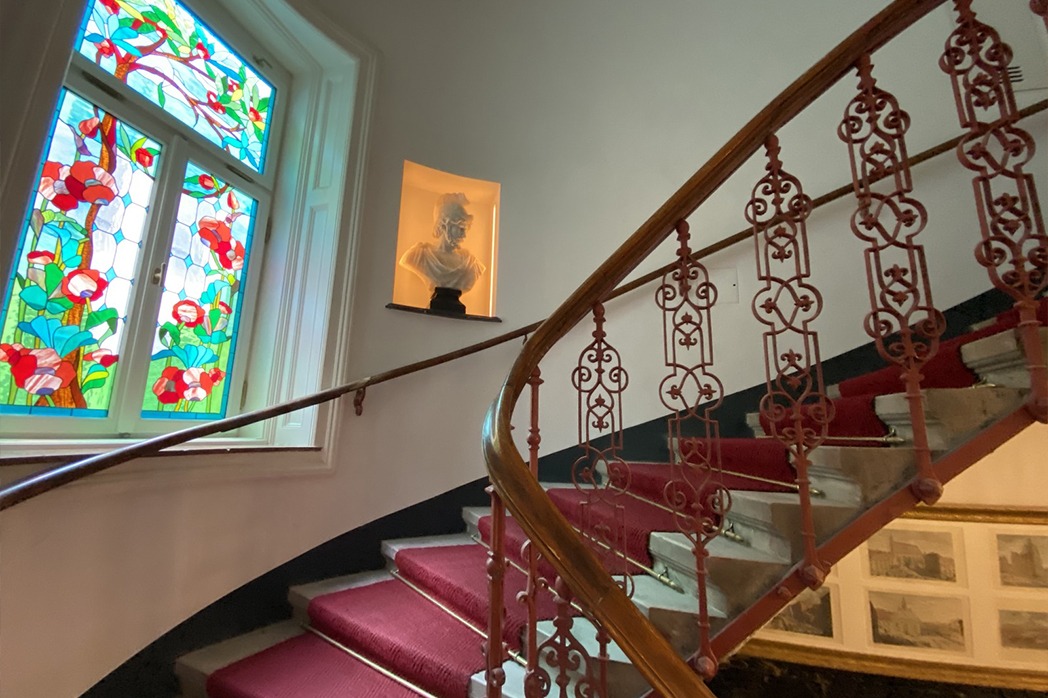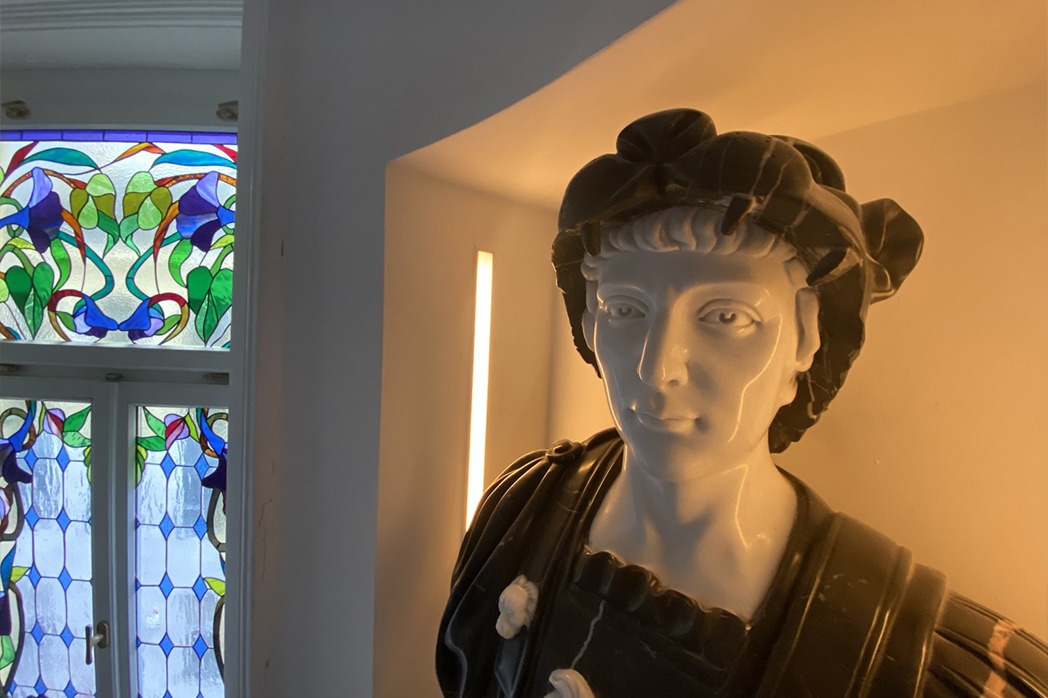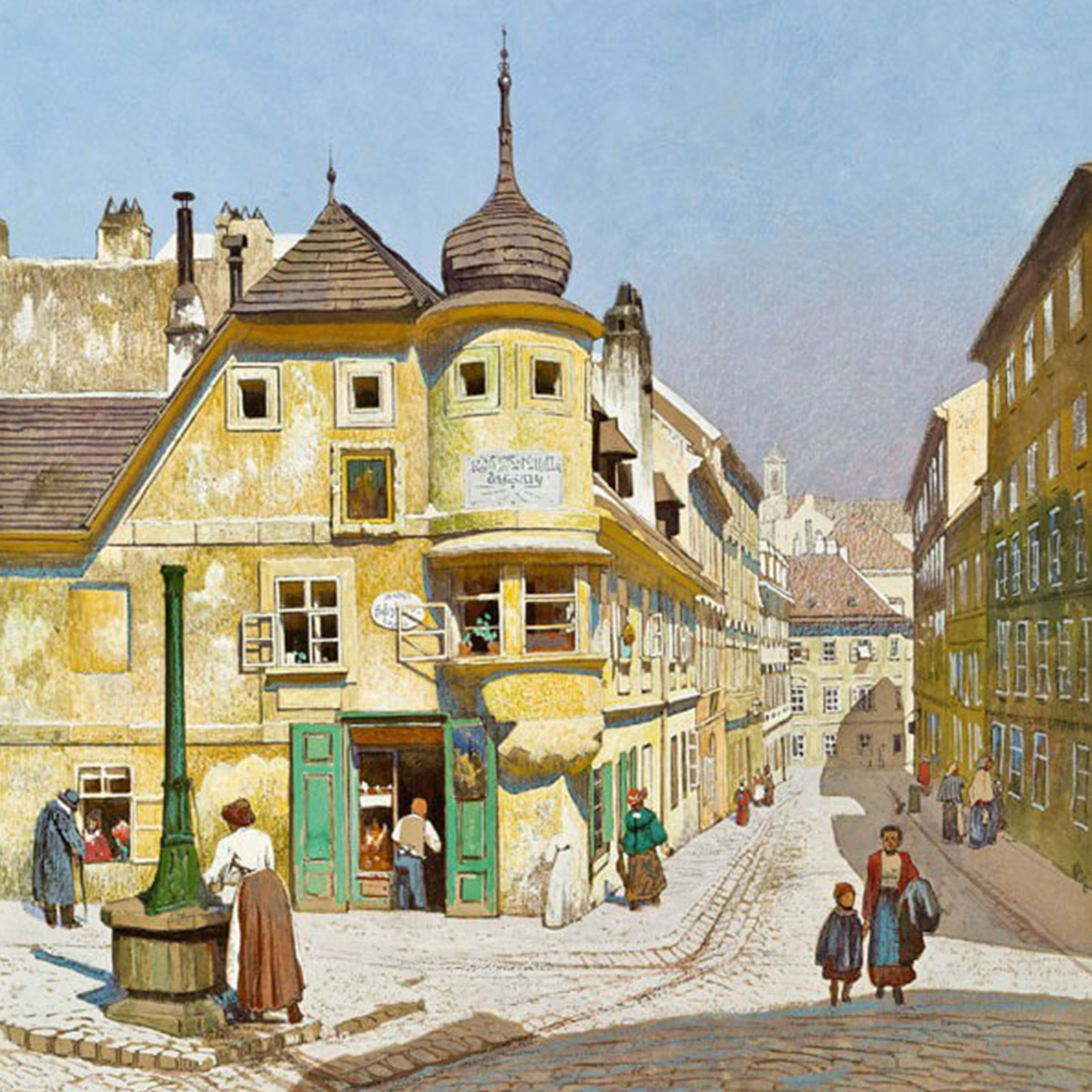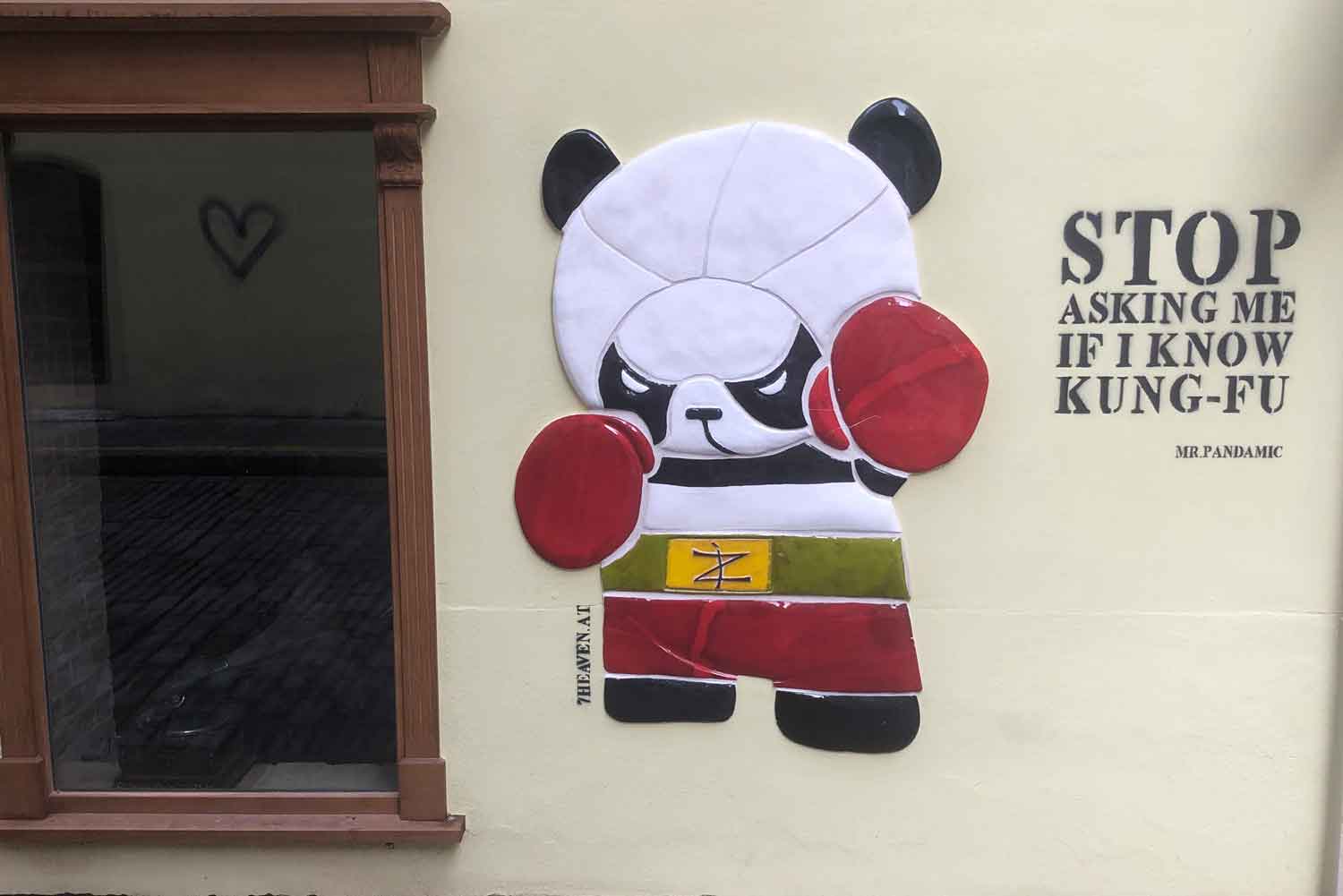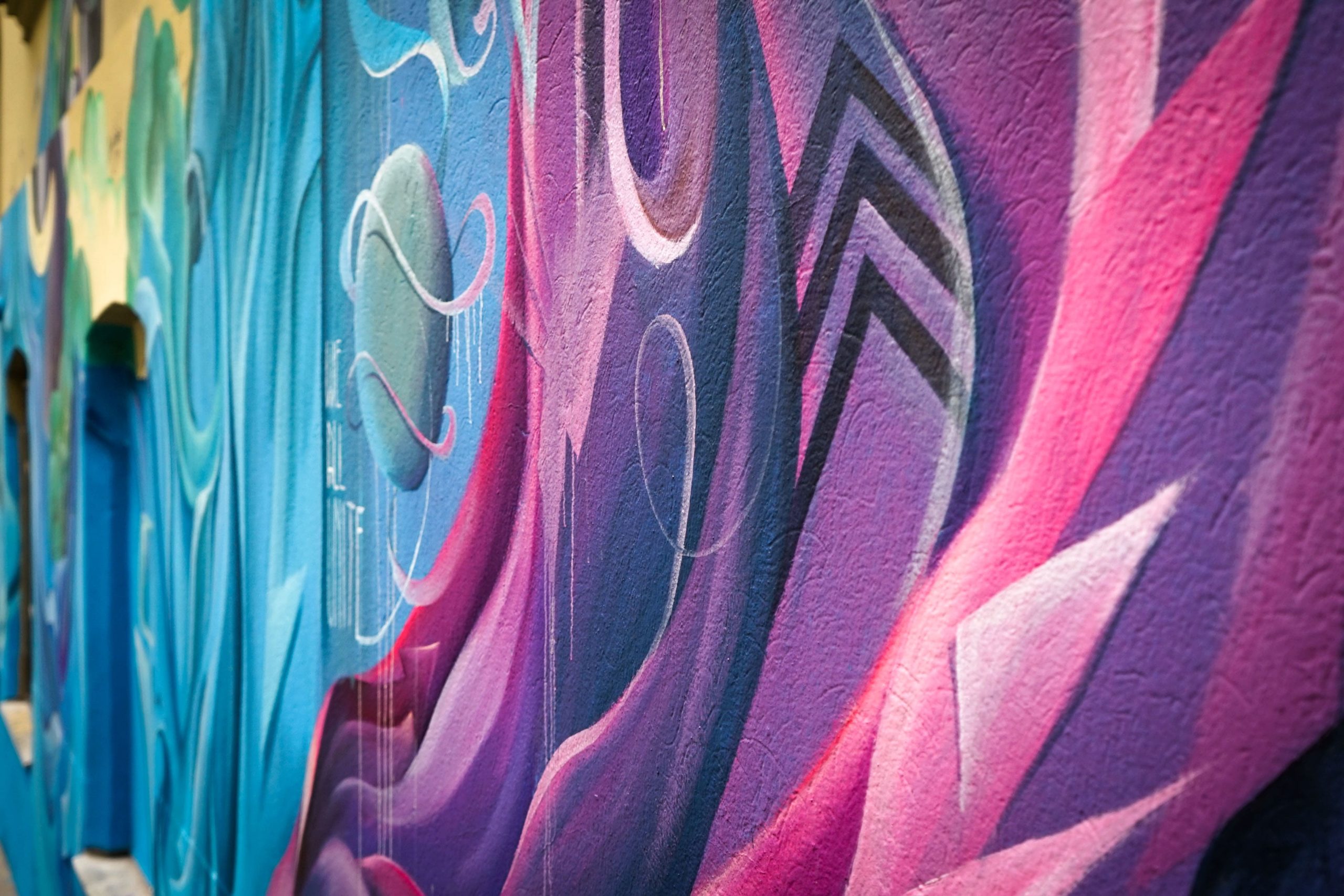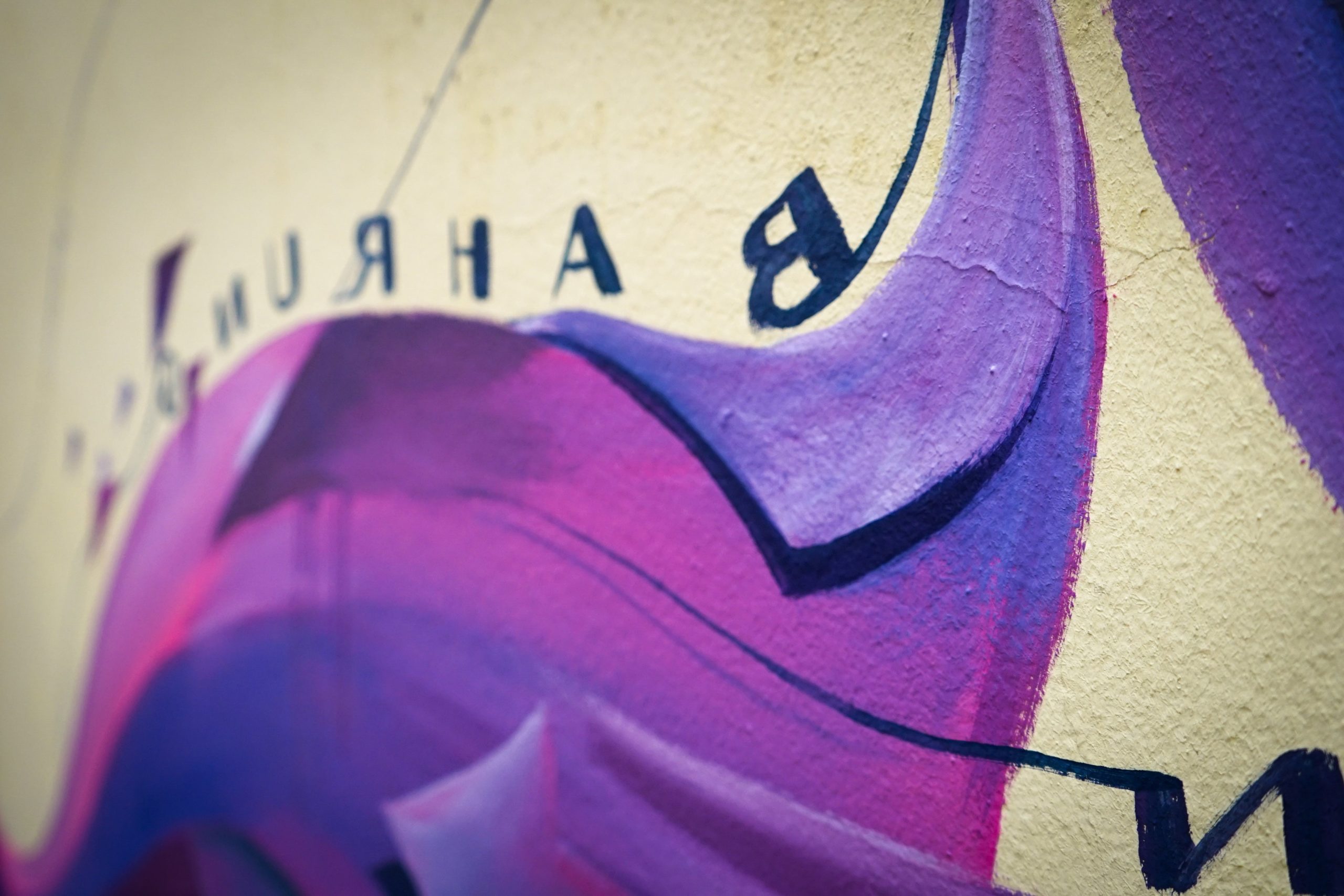The building is located in Vienna’s seventh district. And so the name 7th HEAVEN was born. This house used to be very well known in Vienna under the names “Rondellhaus” or “Fassziehhaus”. It was once the hunting lodge of Heinrich II Jasomirgott (1107-1177) and is therefore the oldest building in the 7th district. In the courtyard there was a crucifix with the inscription “Gloria tibi trinitatis” (Praise of the Trinity). The musician Johann Alois Drahanek (1812-1876), who played together with Johann Strauss, also lived and worked in this building. In 1899 the Rondellhaus got its current appearance.
The Italian-born artist Zita Prantner spent her youth in Austria and has now lived in Milan for over 30 years. What art does with the crisis – and the crisis with art became clear in 2020.
Mr. Pandamic is a reflection of his time and the urge to say what cannot be expressed so easily.
In collaboration with Hollywood actress Rose McGowan, Tom Lohner developed the concept for an over-scale mural art piece. It shows in an ecclesiastical way two large figures – a woman and a man, wrapped in seemingly never ending coats.
